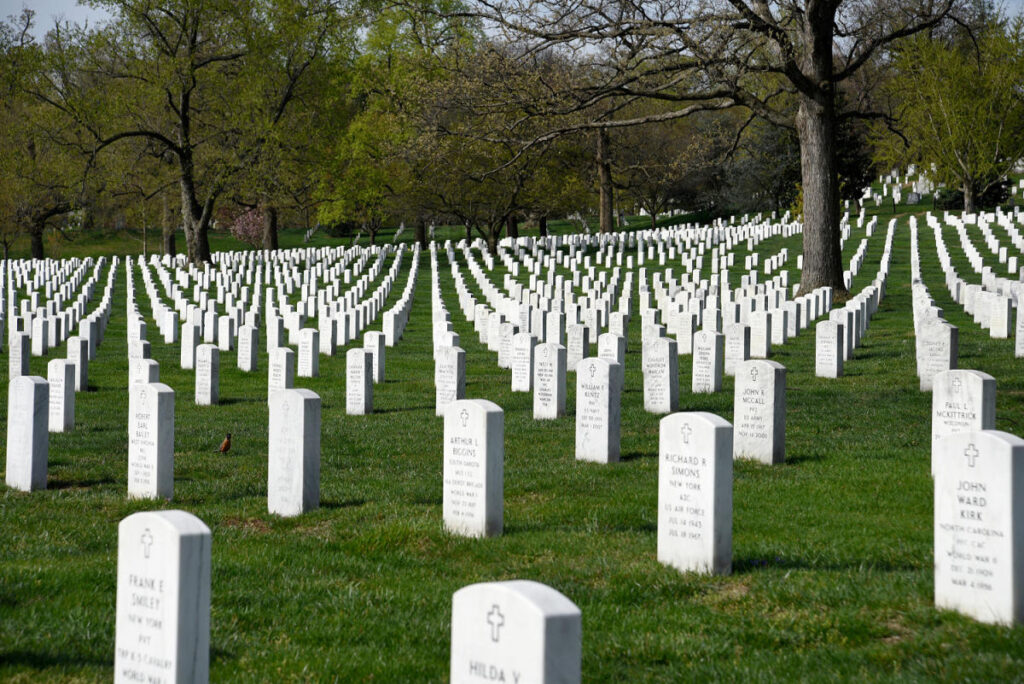On August 26, a contentious incident occurred at Arlington National Cemetery involving a staffer from former President Donald Trump’s campaign and an employee of the cemetery, described in a recently released, heavily redacted police report, categorized as a “simple assault.” According to the report, the incident unfolded when the campaign staffer attempted to bypass the cemetery worker, who was enforcing restrictions against photography in the area. The worker reportedly attempted to stop the staffer, leading to physical contact as the staffer used both hands to push past. Although the cemetery employee did not sustain injuries that required medical attention and subsequently declined to press charges, details regarding the identities of those involved were obscured in the document.
The incident occurred during a ceremony commemorating the loss of thirteen U.S. service members in Afghanistan during a terrorist attack by the Islamic State. Trump was present at Arlington that day for a wreath-laying ceremony, marking the anniversary of the attack. Following the memorial event, he ventured into a restricted area of the cemetery known as Section 60, where the altercation took place. The cemetery has regulations that prohibit political activities, including public campaigning and photography, raising questions about the appropriateness of the campaign staffer’s actions and the circumstances surrounding the confrontation.
The report’s release came about as a result of a legal effort by American Oversight, a non-profit organization focused on government transparency, which successfully sued for access to the report following a judge’s order for the Defense Department to provide the documents. An Army spokesperson stated that since the law enforcement investigation concerning the incident remains open, further details could not be disclosed at the moment. This incident reflects ongoing scrutiny and debate regarding the conduct of political figures in sensitive locations, especially those with historical and national significance.
Trump’s campaign representatives have denied aspects of the incident, arguing that no physical altercation transpired as characterized in the report. They maintained that it was a misunderstanding, asserting that an unidentified individual was inappropriately blocking the pathway for the campaign staff. The incident is part of a broader narrative about Trump and his administration’s relationship with military personnel, which has been further complicated by several recent revelations regarding the former president’s alleged remarks about military figures and historical figures, drawing attention from political analysts and observers alike.
Former White House chief of staff John Kelly has notably criticized Trump, suggesting he embodies characteristics often associated with authoritarianism, even reportedly calling him a “fascist.” Reflecting upon Trump’s comments that allegedly expressed admiration for Hitler and questioned the sacrifices of fallen soldiers has contributed to a charged political atmosphere surrounding the former president and his conduct regarding military affairs. Trump has publicly disputed these characterizations and statements attributed to him, attempting to distance his presidential legacy from such contentious narratives.
As discussions evolve regarding Trump’s engagements with military and national security matters, actions like the alleged incident at Arlington National Cemetery continue to shape public perception and political discourse. The interplay between Trump’s campaign activities, his relationship with military officials, and broader implications for conduct within federally protected and respected sites remains a critical focal point. While legal avenues continue to unveil information surrounding these events, the tension between political activity and respect for military memorialization remains a contentious issue in American political culture.

